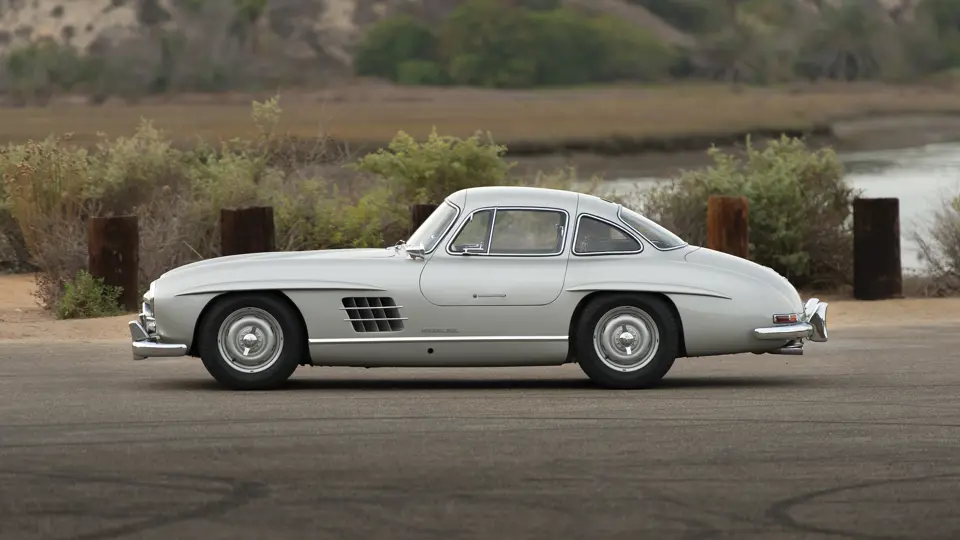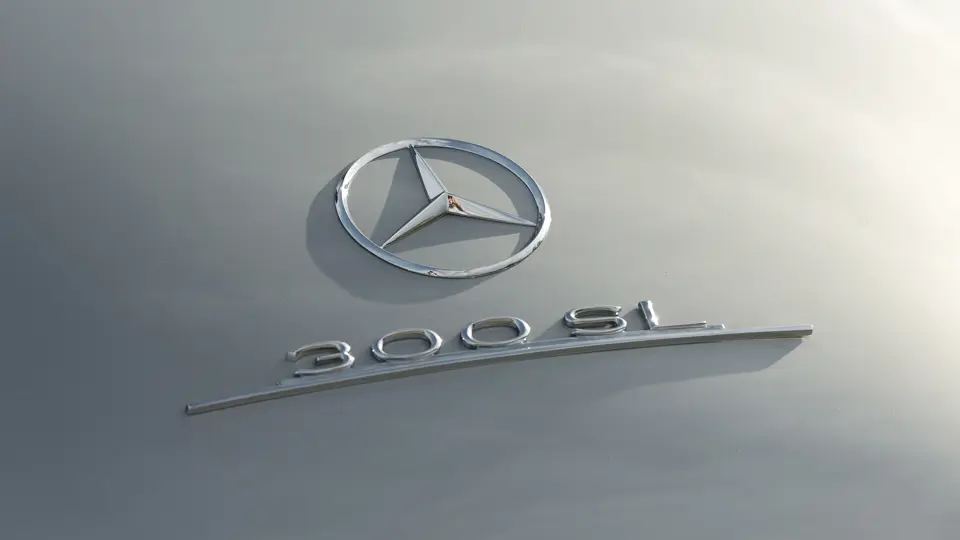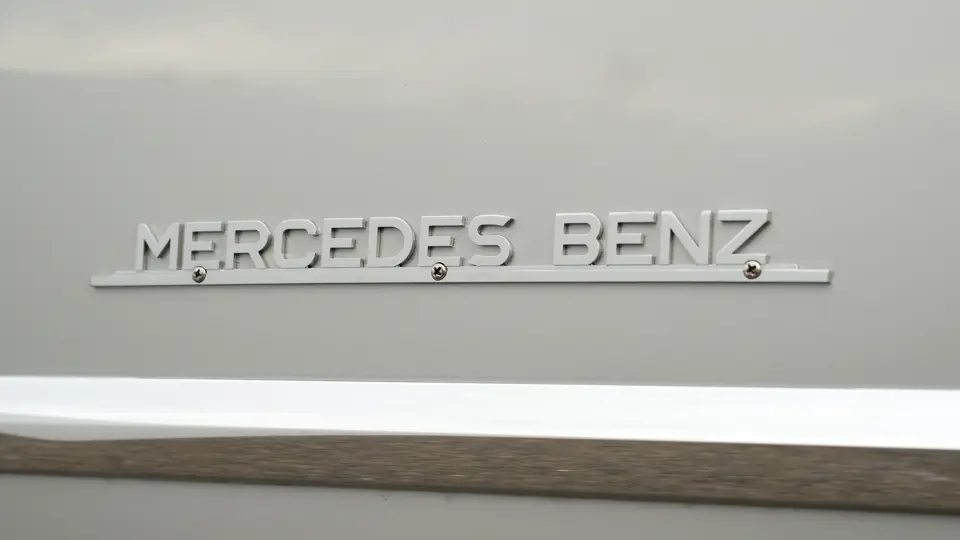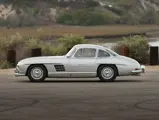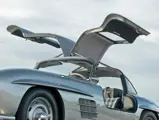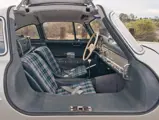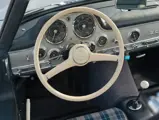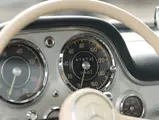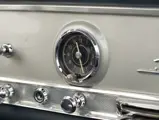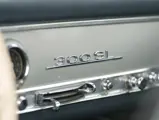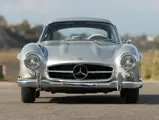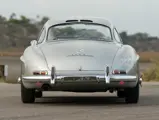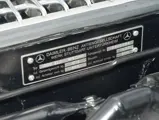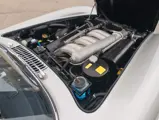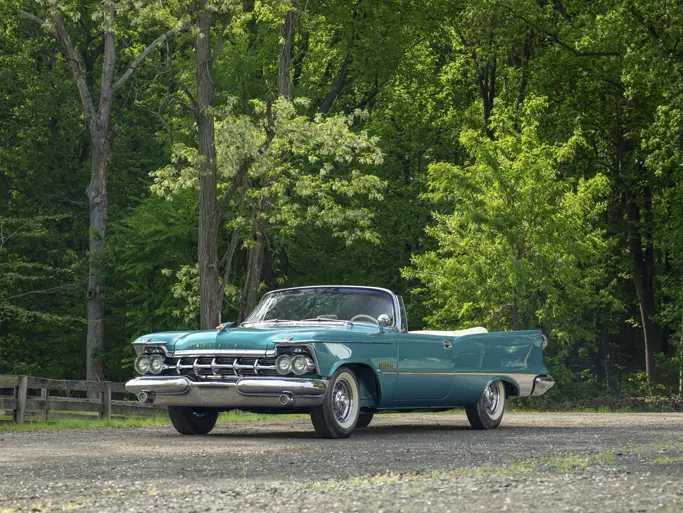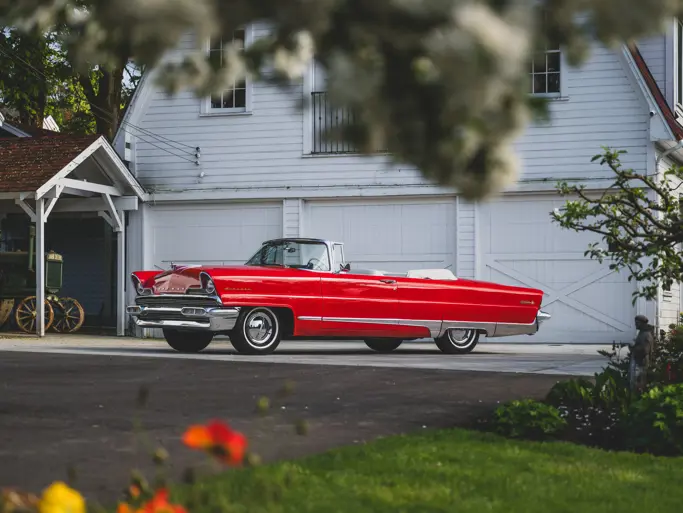
1955 Mercedes-Benz 300 SL Gullwing
{{lr.item.text}}
$1,485,000 USD | Sold
{{bidding.lot.reserveStatusFormatted}}
- Bare-metal repaint in 2013 by Pollock Automotive Restoration
- Equipped with highly desirable Rudge wheels and belly pans
- Both leather and plaid cloth interiors are included, along with fitted luggage
- A beautiful matching-numbers Gullwing
215 hp (DIN), 240 hp (SAE), 2,992 cc SOHC six-cylinder engine with Bosch mechanical fuel injection, four-speed manual transmission, coil-spring independent front suspension, coil-spring and swing axle rear suspension, and four-wheel hydraulic drum brakes. Wheelbase: 94.5 in.
The original Mercedes-Benz 300 SL was created for the 1952 racing season to test the waters prior to making a full-scale return to racing competition. It was simply a makeshift expediency to allow an early entrance to racing following WWII and to keep Mercedes’ name in the news long enough for the firm’s 1954 Grand Prix car to be completed. To deem this exercise successful is an understatement, as a 2nd and 4th at the Mille Miglia, a 1st and 2nd at Le Mans, Nürburgring, and the Carrera Panamericana, and a 1-2-3 sweep at Bern certainly spelled things out for the competition.
Although Mercedes-Benz had no intentions of putting the car into production, U.S. importer Max Hoffman had ideas of his own. Hoffman, both a master marketer and a man of great insight, convinced Daimler-Benz to offer a production model by ordering 1,000 of them to be built and sent to the United States. Since the competition model had been sourced from off-the-shelf parts of Mercedes’ 300-series saloon cars, it seemed relatively easy for the manufacturer to honor his request. The resulting car, however, was exceedingly complex mechanically and not really designed for volume production. Nonetheless, thanks to the persistence (and clout) of Hoffman, Mercedes-Benz proceeded with a limited production, and the car was born.
Fuel injection replaced the race car’s carburetors, and the Bosch mechanical unit was a first for a production car. The new Karl Wilfert-designed body was largely steel, rather than all aluminum, and it included bumpers and other creature comforts that were not necessary for a competition car. This raised the weight from the racer’s 1,900 pounds to nearly 3,000 when the production coupe was introduced. Regardless, underneath one would find Rudi Uhlenhaut’s brilliant tubular space-frame chassis and the powerful 3.0-liter inline six-cylinder engine.
The 300 SL became the first Mercedes-Benz to be introduced in the United States before it was shown in Germany. It was unveiled in New York on February 6, 1954, and it took the automotive world by storm. The SL moniker reflected the pioneering use of multi-tube space-frame construction. It also featured fully independent suspension, in addition to its fuel-injected, 240-horsepower straight-six with dry-sump lubrication, as well as an engine that was inclined to the side in order to reduce the height of the bonnet. Power was delivered through a four-speed manual gearbox, giving the car a 150-mph top speed and a 0–60 mph time of just 8.8 seconds, making it the fastest production automobile of its time. The result was a car that you could buy in New York City in 1954 for a princely sum of $6,820.
Hoffman’s original request of 1,000 cars was exceeded, as production of the semi-hand-built car reached 1,400 units. The 300 SL Coupe, or Gullwing as it became known, was discontinued after the 1957 model year. Today, it remains one of the most recognized and coveted of all sports cars ever built.
This spectacular car was originally sent to the United States, arriving in New York on August 25, 1955. According to records from the Mercedes-Benz Classic Center, this 300 SL was originally painted DB350 Medium Blue over a light grey leather interior. When the car was freshened some years later, the combination was reversed, with the exterior painted a classic M-B Silver Grey and the interior fitted with deep blue leather hides.
Records from the Gullwing Registry indicate that the car spent its early years in the state of New York. Owners during this time included David Todd, of New York City, and Martin Alperstein, of Fishkill, and the car later passed to Richard M. Mills, of Cleveland Heights, Ohio. By the time the current owner purchased it in 2001, the odometer was showing just 39,834 miles. Although not documented, but due to the overall condition of the car, it is thought that these could have been the original miles driven from new. It is fitted with an ATE brake booster that was typical of later cars, along with a stock 3.64 rear axle.
Since purchasing the car, the current owner has used it sparingly and continued to upgrade and improve upon an already outstanding automobile. Initially, it was sent to Gullwing specialists at Hjeltness Restoration, of Escondido, California, who carried out a major engine service, as well as rebuilt the brakes, master cylinder, and brake booster. At the same time, the correct rubber foot-well mats were sourced and fitted, along with a Talbot external mirror. Most recently, the engine was completely rebuilt by another expert, Ed Tatios of Mike Tilson Motorcars in Philadelphia, Pennsylvania. Furthermore, in 2013, the car was stripped to bare metal and repainted its current color by Pollock Automotive Restoration in Pottstown, Pennsylvania. Pollack also installed a new headliner while the car was at its facility.
After this work was completed, the car was shown at the 2013 edition of the 100 Motorcars of Radnor Hunt, where it received the Pre-1959 Debutante Award. Two weeks later, it was presented with a class award in the Postwar Sports and Racing – Closed category at the St. Michaels Concours d’Elegance. And, shortly thereafter, it was invited to participate at the inaugural Kiawah Island Motoring Retreat.
This matching-numbers example is fitted with a recent set of Dunlop tires and is equipped with both the highly desirable Rudge-style wheels and aerodynamic belly pans. In addition, it comes with a complete tool kit, owner’s manual, fitted luggage, and two sets of seats (both leather and plaid). The 300 SL today remains one of the greatest production automobiles ever produced, and it will be forever recognized for sheer performance, heritage, engineering, and overall excellence in an automobile.
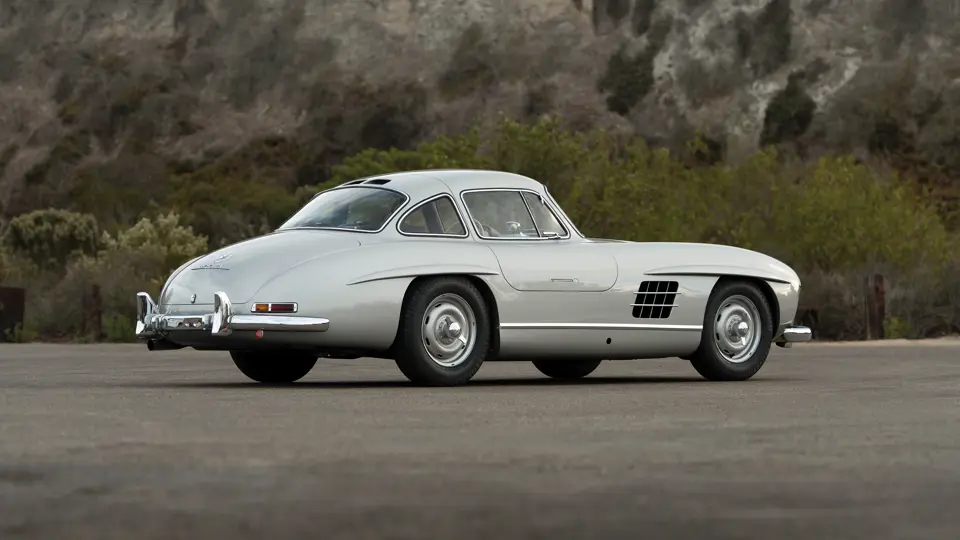

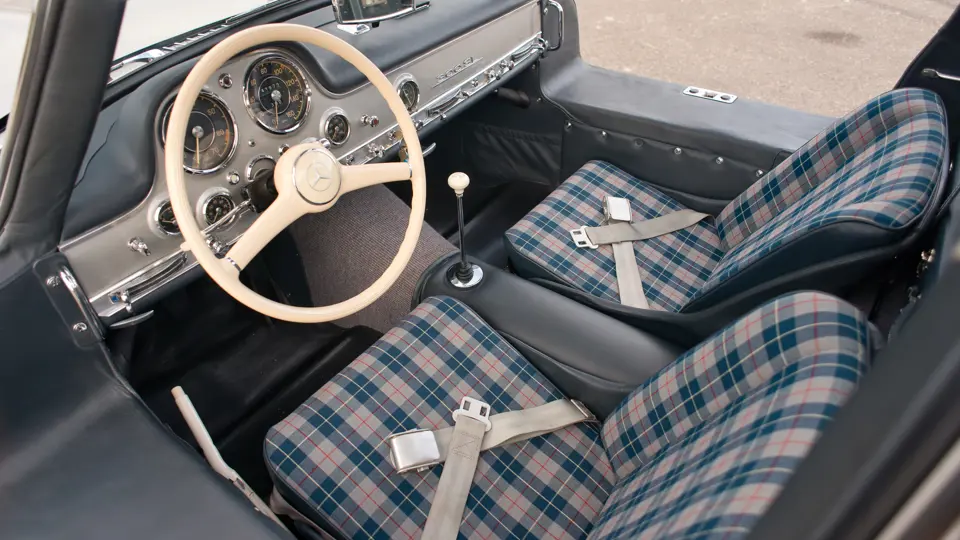

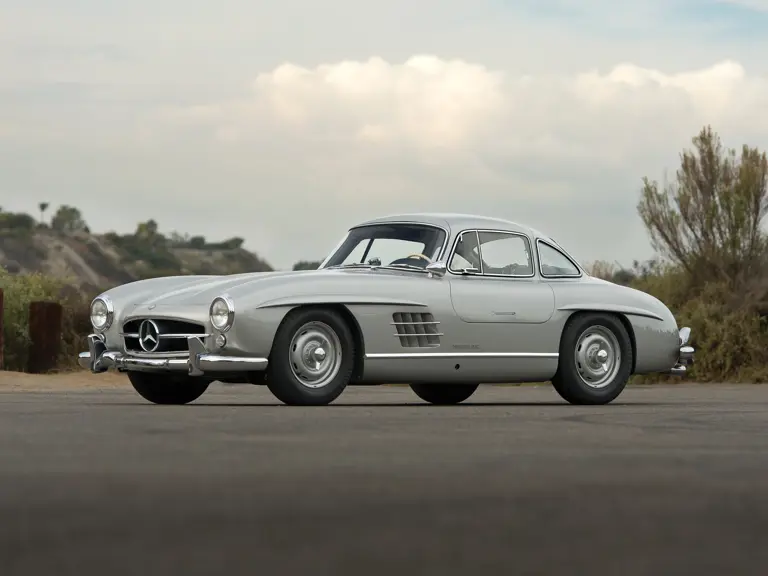
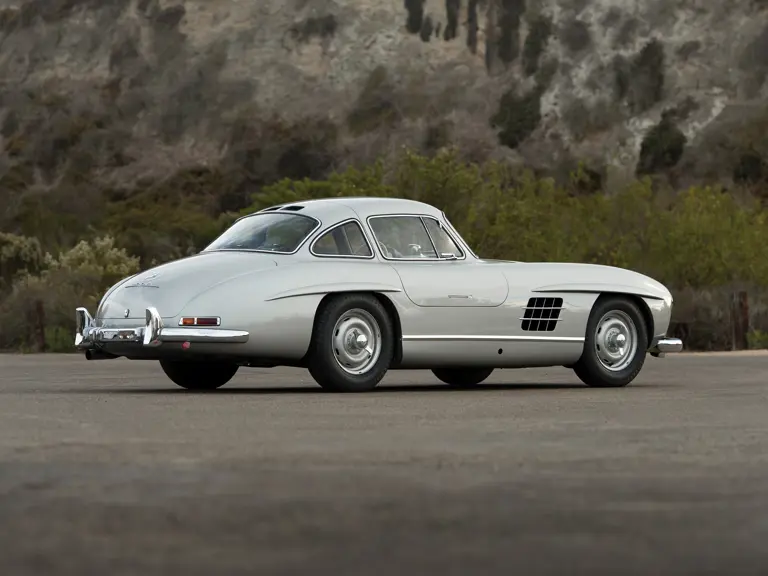
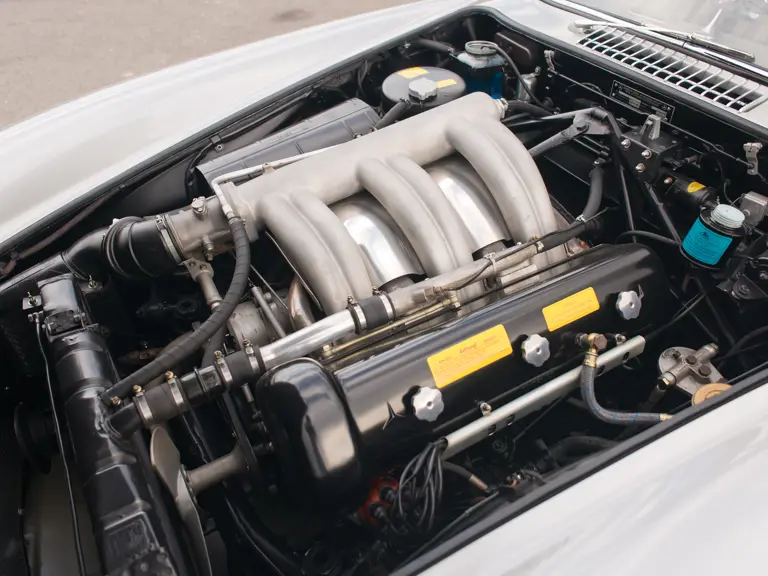
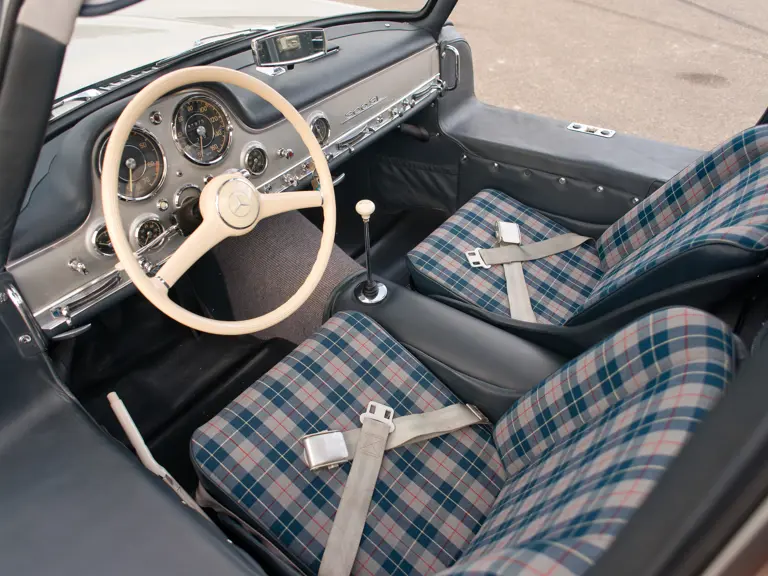
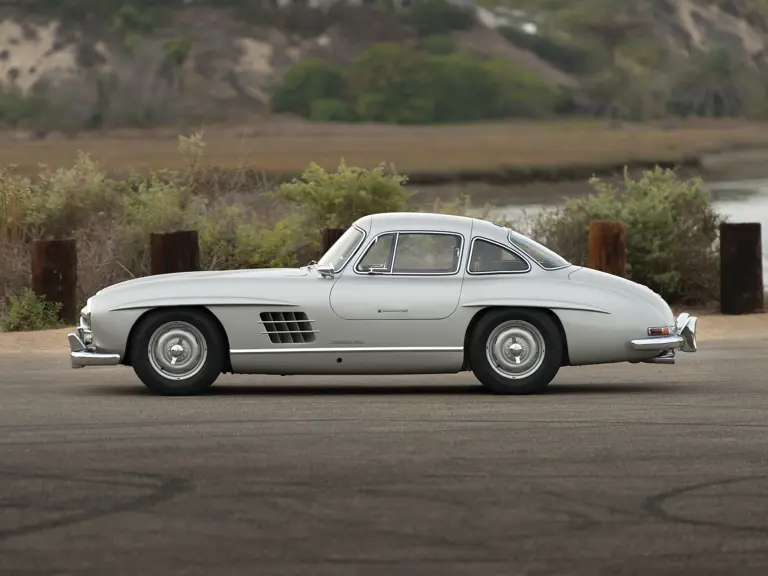
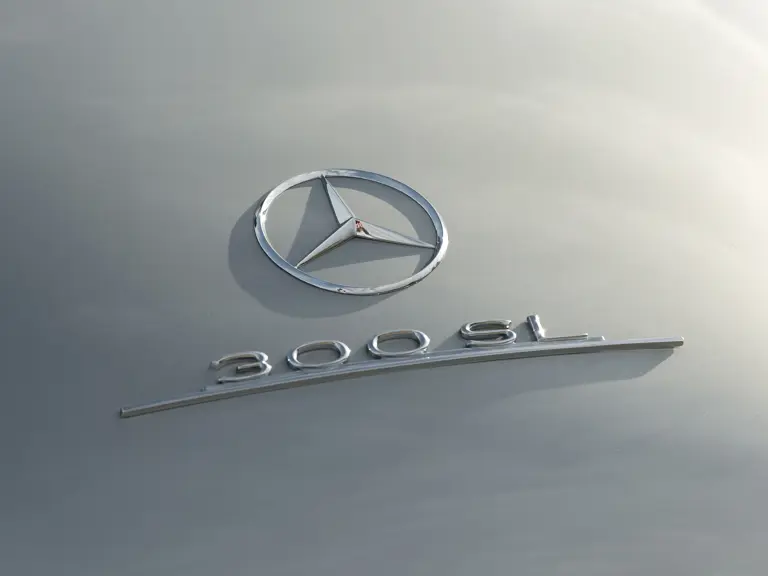
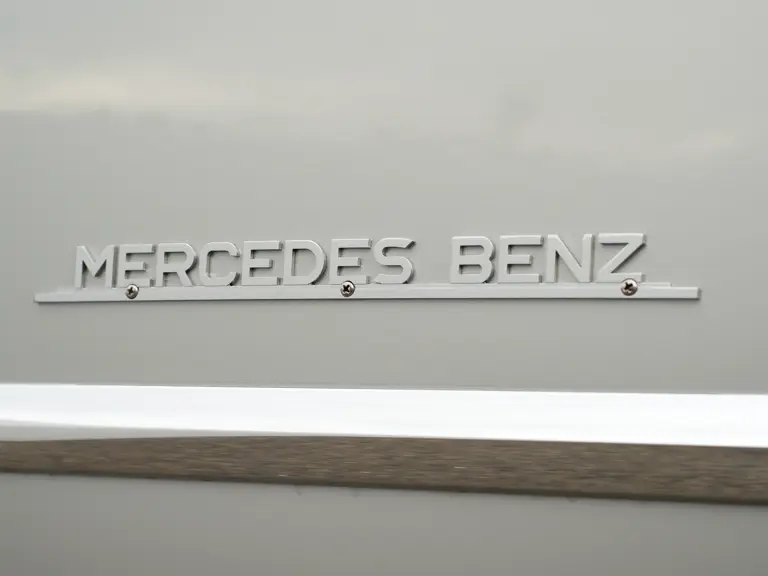
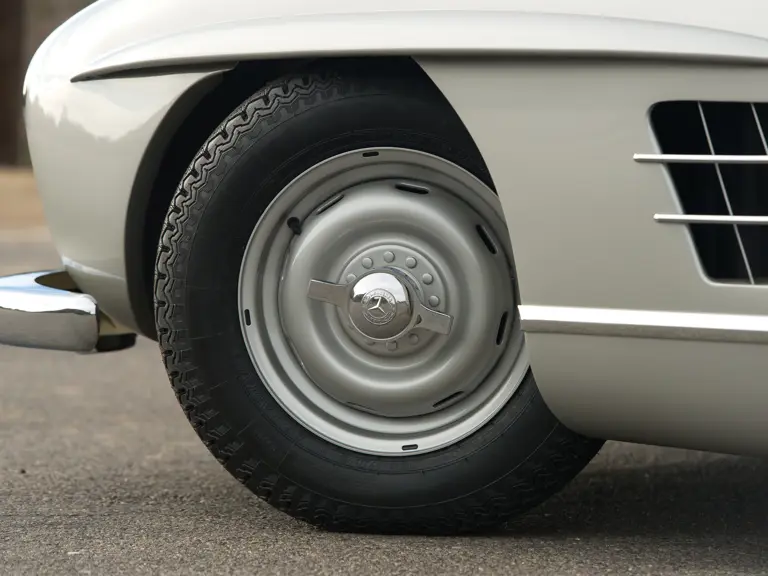
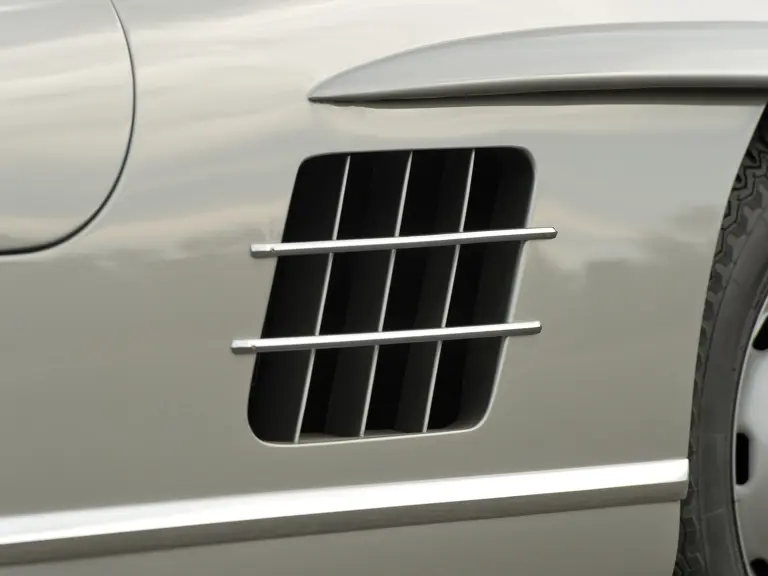
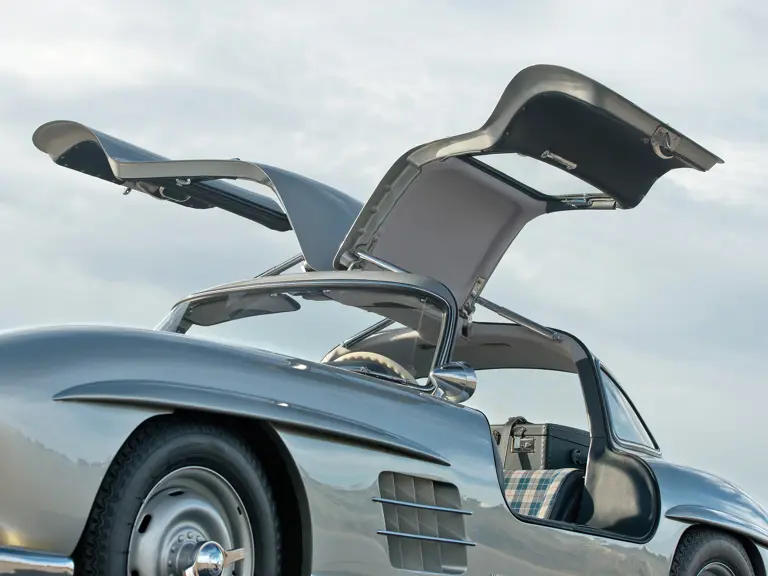

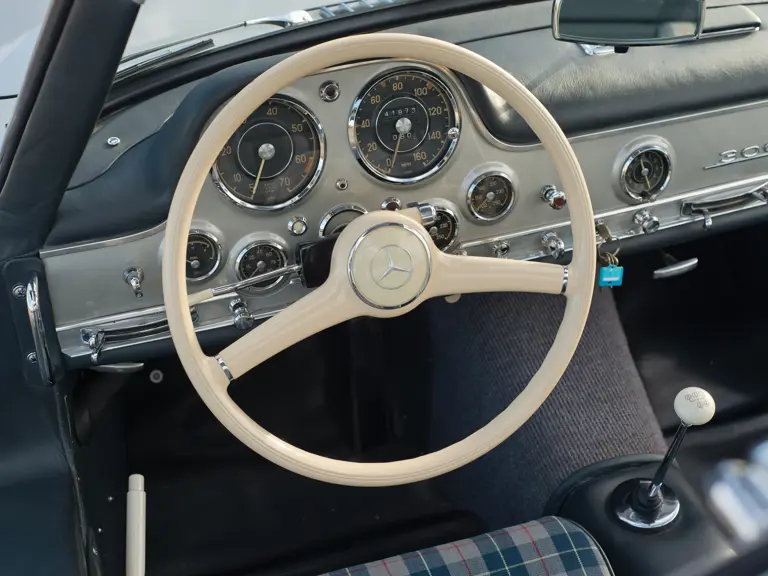

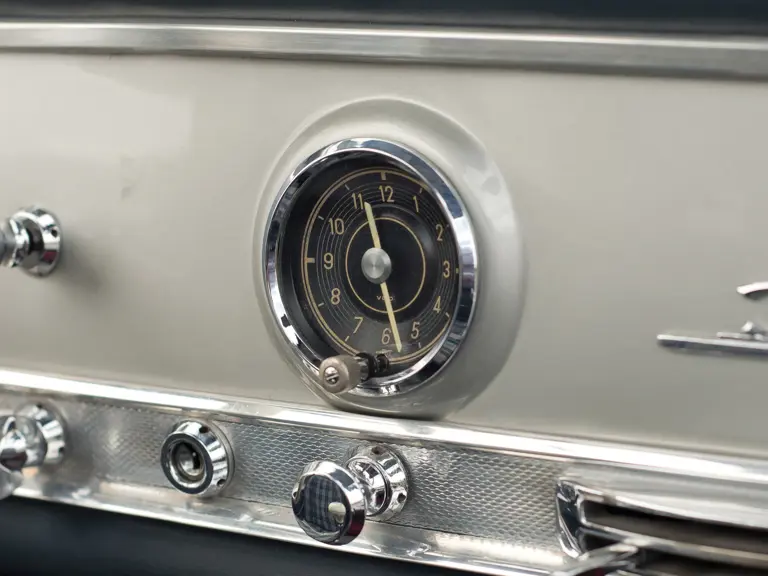

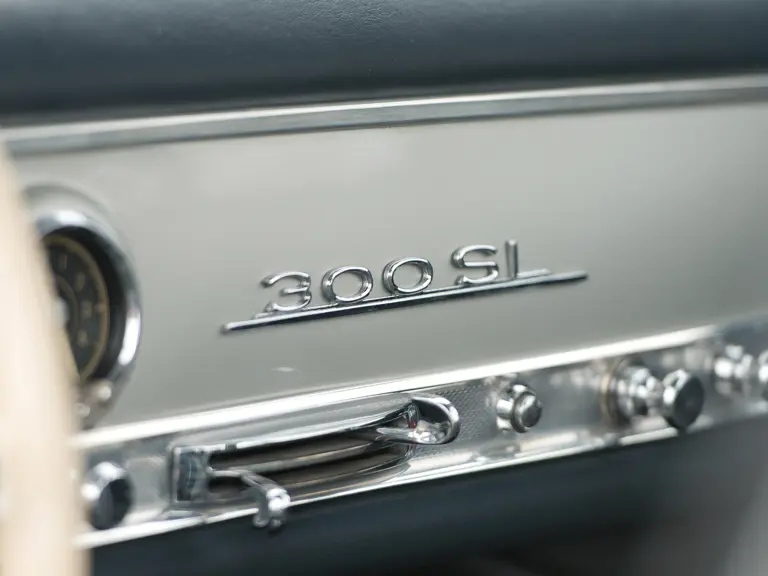
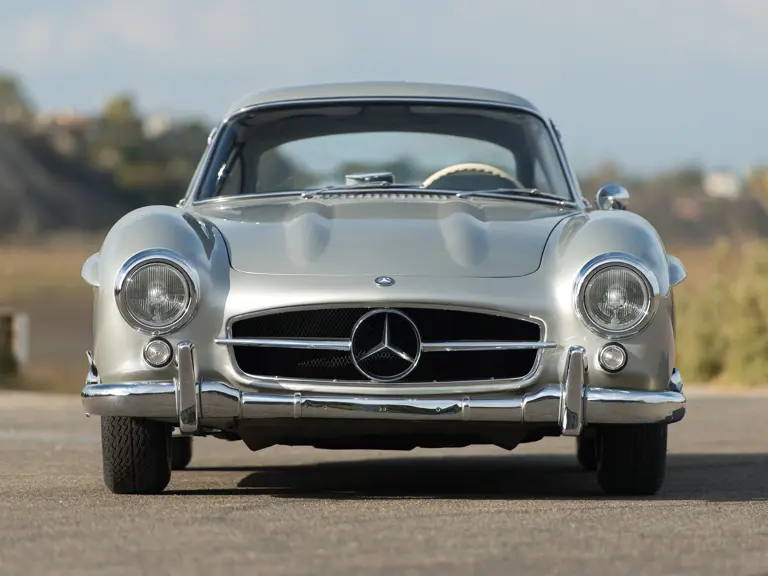
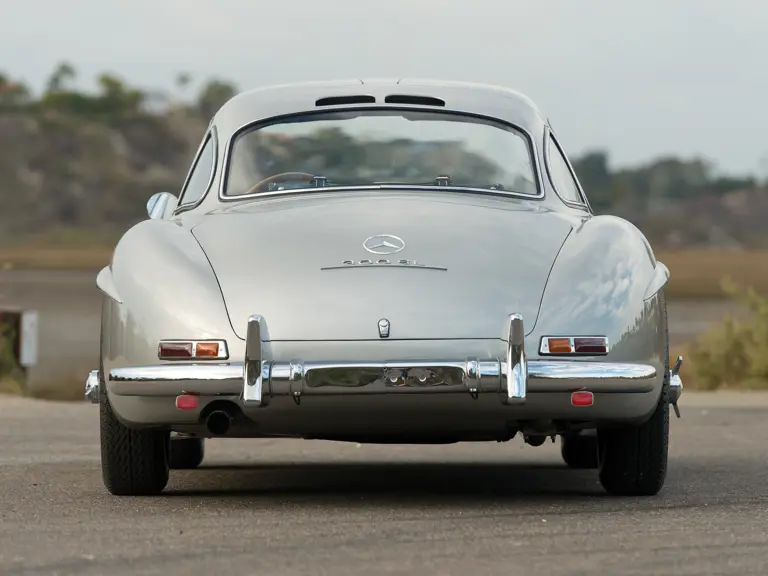
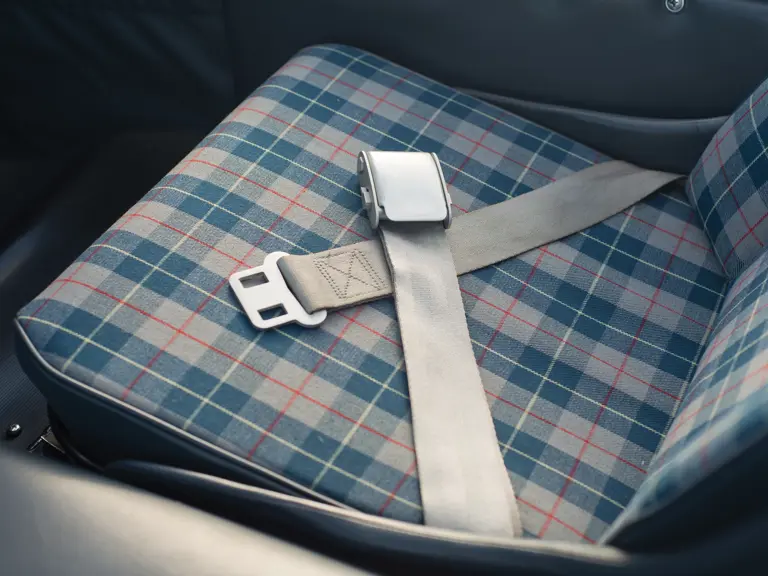
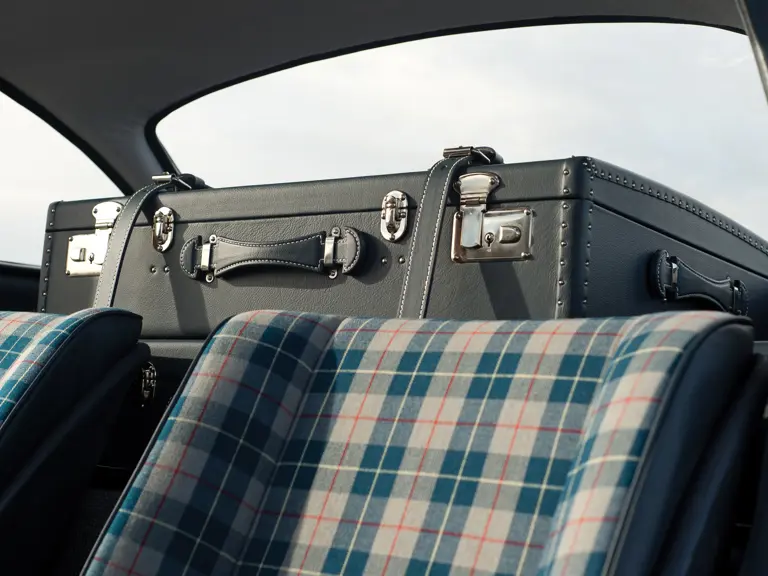
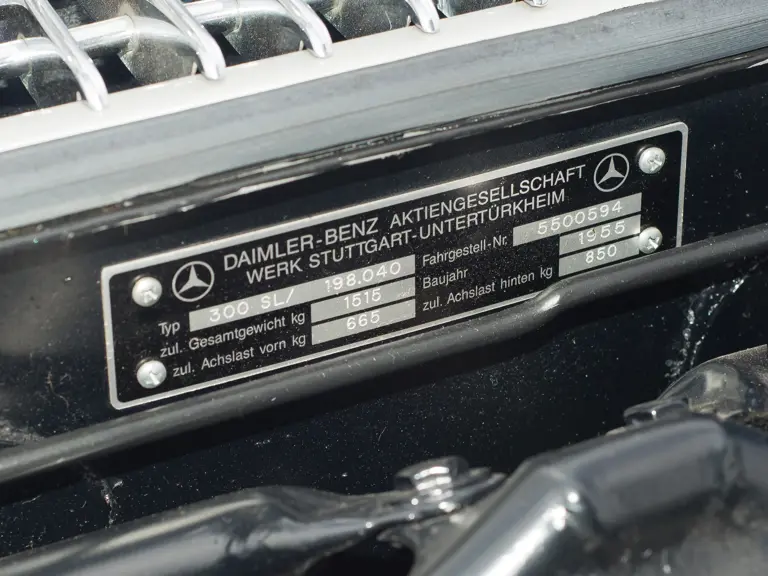
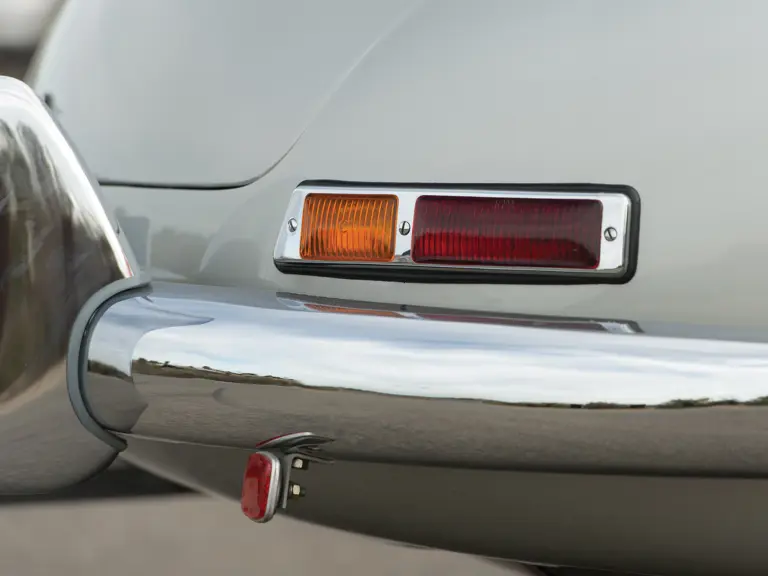
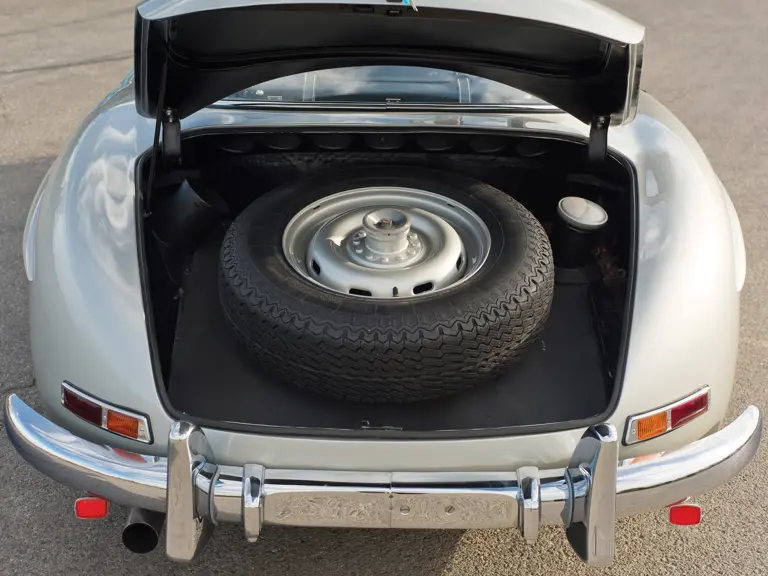
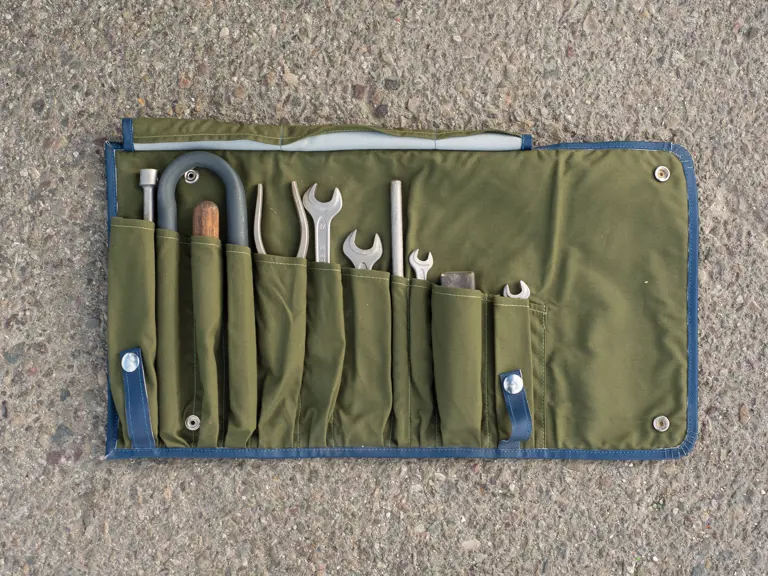
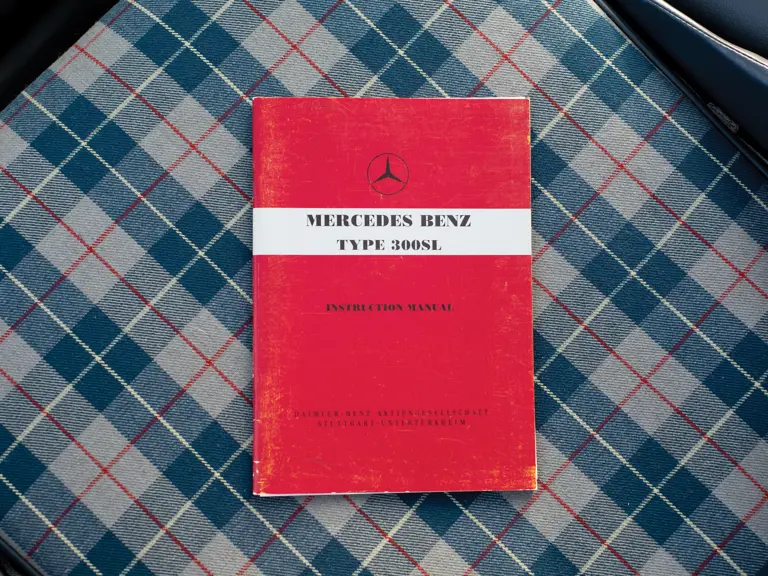
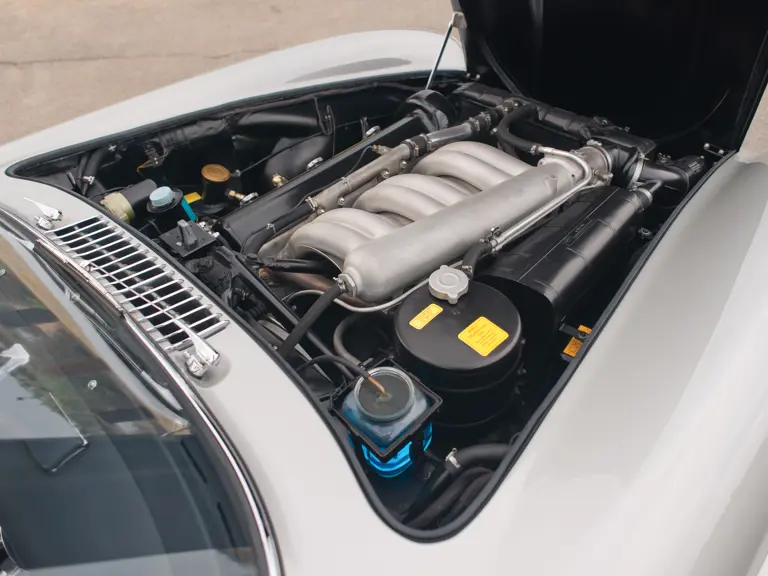
 | Phoenix, Arizona
| Phoenix, Arizona
